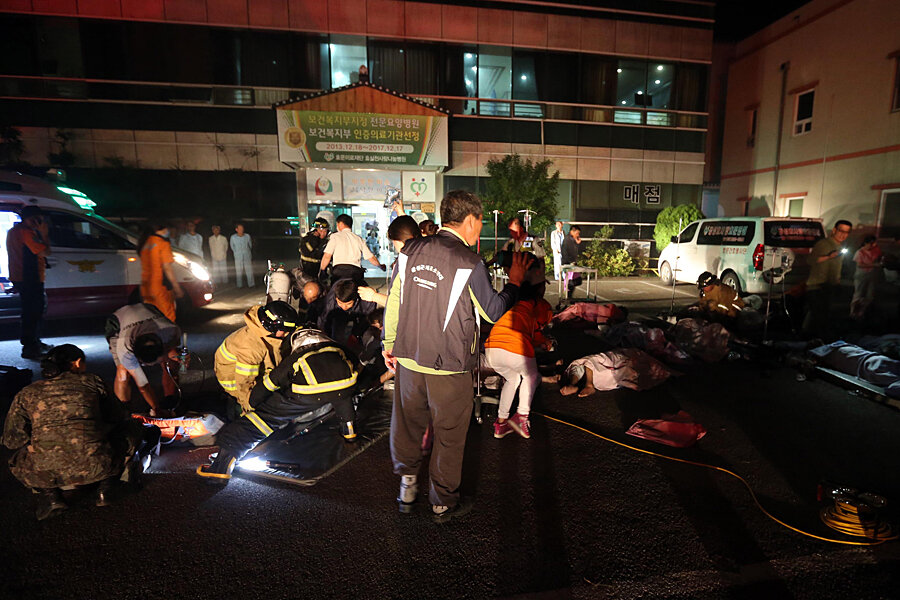South Korean hospital fire kills 21, injures seven
Loading...
| Seoul, South Korea
A fire believed set by an 81-year-old dementia patient blazed through a hospital ward for the elderly Wednesday and killed 21 people in southern South Korea, mostly from smoke inhalation, police and fire officials said.
The fire on the second floor of the Hyosarang Hospital in Jangseong county also injured seven people and raised concerns about lax fire regulations at a time when the nation is undergoing soul-searching about public safety following the ferry sinking last month that left more than 300 people dead or missing.
Media reports noted that hospitals for the elderly such as Hyosarang, which specializes in dementia and palsy patients, are not required to have sprinklers in South Korea despite a rapidly aging population.
"These are the incidents that wretchedly show the dangerous foundation on which our country is established," the Seoul-based Hankyoreh newspaper said in an editorial on its website.
Security video showed the suspect entering the room where the blaze began, and the remains of a lighter were found in that room, police station chief Noh Kyu-ho told a televised briefing. Noh said the man, identified only by his surname Kim, denied responsibility.
The video footage showed the fire starting to spread from that room about two minutes after Kim left, another police officer said, speaking to The Associated Press on condition of anonymity because of department rules. Hairs on Kim's arms and hands were singed and he had moved back to his own room afterward and then quickly exited the hospital later, the police officer said.
There were 34 patients and one nurse on the hospital's second floor at the time of the blaze, and Jangseong Fire Department officials said 20 of the patients and the nurse were killed, mostly from suffocation. They spoke on condition of anonymity because of office rules.
More than 270 firefighters put the fire out after about six minutes, officials said.
Officials said that 45 people, including a nurse, were on the hospital's first floor but that they all escaped.
Kim Jeong-bae, one of the firefighters who entered the building, said none of the bodies that he and his colleagues retrieved were burned and that they apparently were already dead when firefighters entered the hospital while it was engulfed in black smoke.
South Korean media including Yonhap news agency earlier had reported some of the dead had their hands bound to their beds, without citing any source for the information. Fire officials later Wednesday said that report was inaccurate.
Kim, the firefighter, said all the dead bodies he saw were found on beds or on the floor but none of them had their hands bound. He said the second-floor windows are barred. Two hospital officials, speaking on condition of anonymity because they weren't authorized to talk to the media, also said that patients were not bound to beds.
The fire comes as South Korea debates long-ignored safety lapses in a country that rapidly rose from poverty and the destruction of the 1950-53 Korean War to become Asia's fourth biggest economy.
It is too early to say if safety issues were involved in this fire.
But the recent ferry sinking has caused South Korea to wrestle over issues long neglected as the country rose from poverty, war and dictatorship to an Asian powerhouse. The tragedy exposed regulatory failures that appear to have allowed the ferry Sewol to set off with far more cargo than it could safely carry.
A fire earlier this week at a bus terminal near Seoul killed eight people and injured 57.
___
AP writer Jung-yoon Choi contributed to this report.







